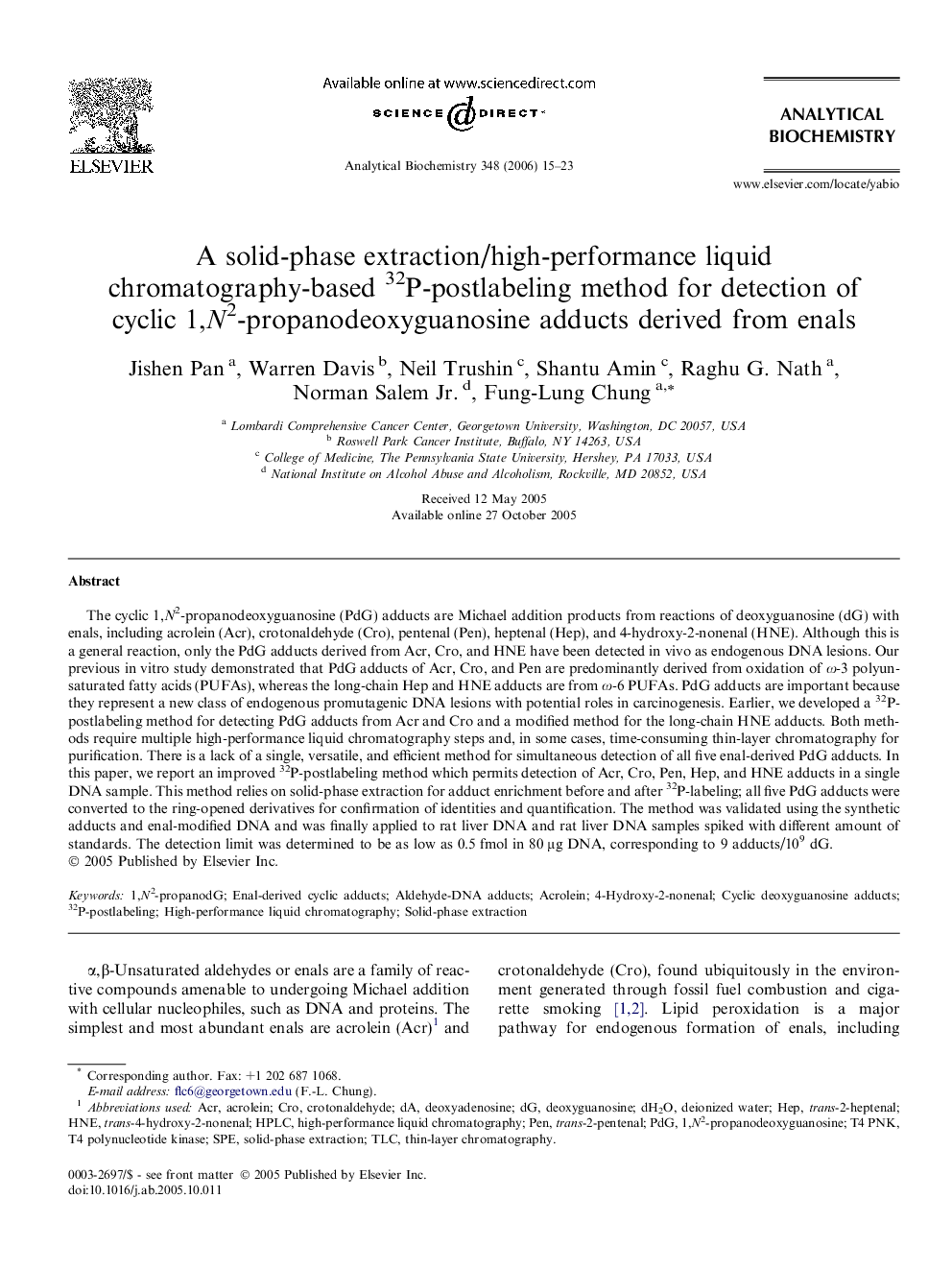| Article ID | Journal | Published Year | Pages | File Type |
|---|---|---|---|---|
| 1176773 | Analytical Biochemistry | 2006 | 9 Pages |
The cyclic 1,N2-propanodeoxyguanosine (PdG) adducts are Michael addition products from reactions of deoxyguanosine (dG) with enals, including acrolein (Acr), crotonaldehyde (Cro), pentenal (Pen), heptenal (Hep), and 4-hydroxy-2-nonenal (HNE). Although this is a general reaction, only the PdG adducts derived from Acr, Cro, and HNE have been detected in vivo as endogenous DNA lesions. Our previous in vitro study demonstrated that PdG adducts of Acr, Cro, and Pen are predominantly derived from oxidation of ω-3 polyunsaturated fatty acids (PUFAs), whereas the long-chain Hep and HNE adducts are from ω-6 PUFAs. PdG adducts are important because they represent a new class of endogenous promutagenic DNA lesions with potential roles in carcinogenesis. Earlier, we developed a 32P-postlabeling method for detecting PdG adducts from Acr and Cro and a modified method for the long-chain HNE adducts. Both methods require multiple high-performance liquid chromatography steps and, in some cases, time-consuming thin-layer chromatography for purification. There is a lack of a single, versatile, and efficient method for simultaneous detection of all five enal-derived PdG adducts. In this paper, we report an improved 32P-postlabeling method which permits detection of Acr, Cro, Pen, Hep, and HNE adducts in a single DNA sample. This method relies on solid-phase extraction for adduct enrichment before and after 32P-labeling; all five PdG adducts were converted to the ring-opened derivatives for confirmation of identities and quantification. The method was validated using the synthetic adducts and enal-modified DNA and was finally applied to rat liver DNA and rat liver DNA samples spiked with different amount of standards. The detection limit was determined to be as low as 0.5 fmol in 80 μg DNA, corresponding to 9 adducts/109 dG.
